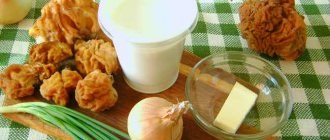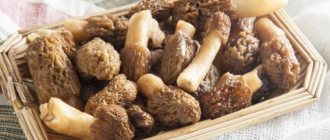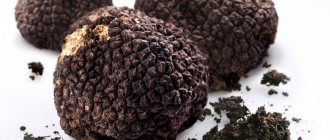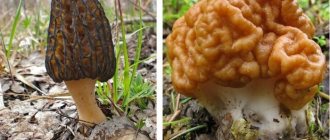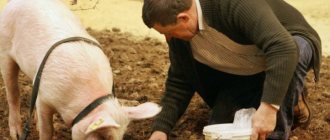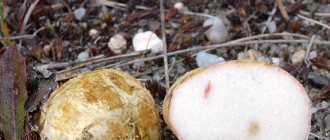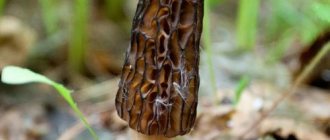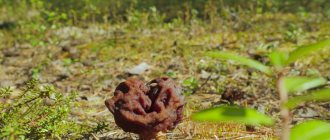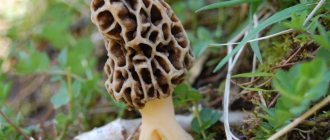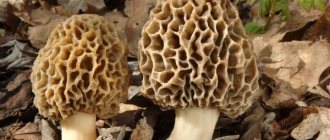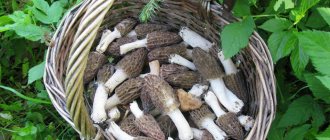Do marsupial fungi exist? This question interests every second schoolchild who enthusiastically studies a biology course. These fungi belong to the kingdom, which includes representatives with a divided vegetative body. They have specific sexual elements - bags. They include eight ascospores. Some species of these fungi are classified as imperfect because they lose sexual abilities in the process of life. They also have asexual reproduction.
These fungi almost never form real tissues. The only exceptions are some parasitic organisms. Each representative of this class contains chitin (20 to 25 percent) and glucan.
Marsupial fungi (representatives will be listed below) live on the remains of plants or animals.
It is worth noting that many types of mold (red, brown, bluish-green) belong to ascomycetes. Thanks to the orange-pink fungus, the field of genetics has made many advances. Ascomycetes are distributed throughout the world.
The class of marsupial fungi includes approximately 2 thousand genera and 30 thousand species. The most famous representatives are yeast, truffle, morel, parmelia, stitch.
Morphology
The vegetative body consists of several partitions that divide it. Thanks to it, fungi are able to lose less cellular substance from the filamentous formation. If we compare ascomycetes and zygomycotes, it is worth noting that the former live quite a long time.
The marsupial fungus is designed in such a way that its body is capable of exchanging cytoplasm, nuclei, and organelles between spores. Each cell usually has one haploid structural element that stores and transmits hereditary information (DNA).
Description
Higher and lower ascomycetes are combined into one class according to certain characteristics.
The main difference between marsupials is a divided mycelium and a unique sporulation organ (bursa or ascus).
Primitive species include microscopic species, such as yeast or aspergillus.
Macroscopic are real mushrooms with fruiting bodies. Some of them are quite edible and are even considered delicacies (examples of the latter: truffle, string, morel).
According to the classification, there are three main groups.
- The first is vocals. Their body (thallus) usually consists of one cell - budding or dividing, and only a few have an underdeveloped mycelium. Spore bags develop either directly on the mycelium or on budding cells. They do not form a fruiting body.
- The second is euascomycetes. Representatives are characterized by the presence of fruiting bodies, in which bags are formed from special threads - ascogenous hyphae, outside or inside them, where spores develop. When the shell breaks down, they come out and dissipate.
- The third is loculoascomycetes. They are characterized by the absence of fruiting bodies and the presence of special cavities - locules, in which ascospores develop (they got their name because of the place of development - bursa or ascus).
General information about reproduction and development
Marsupial fungi have two methods of reproduction:
- anamorph (asexual way);
- teleomorph (have sexual structures).
In biology, these two processes are called holomorphy. They are completely different from each other. An organism can also change from anamorph to teleomorph. That is why scientists consider ascomycetes born of the same species, but in different ways, as separate representatives. Thanks to molecular research, science makes it easy to understand by what process a particular marsupial fungus was formed.
Features of life
The highest representatives of marsupial fungi choose soil substrate for their life activity. Morels and truffles are delicious species that grow in a special climate and are valued by mushroom pickers for their taste. They can reproduce by spores and mycelium; development largely depends on the external environment: soil nutrition, temperature, lighting.
Lower species are less demanding of external conditions. They withstand unfavorable factors for a long time; their characteristic feature is rapid reproduction. Once on a favorable substrate, they begin to spread quickly. The rooting site is not only soil, but also food, waste, and any inanimate objects. This is why fungal diseases are dangerous for humans, for example, Aspergillus fungi affect the respiratory tract.
Teleomorph (sexual reproduction) in lower forms
Fungi of this class can reproduce using sexual structures, but without the formation of gametes. To carry out this process, male and female organs are formed on the hyphae. In this regard, the characteristics of marsupial fungi are similar to the description of algae - they also have slightly modified oogonia.
If we consider the lower forms, then teleomorph is similar to zygogamy. This is explained by the fact that the formed gametangia have an identical appearance, and after the process of their unification, fusion of the nuclei occurs. But in these fungi, the last action does not affect all structural elements, so multiple karyogamy does not occur. After this, meiosis occurs, after which the zygote passes into the pouch.
Order powdery mildew (Erysiphales)
The order includes one family - Erysiphaceae. The fruiting bodies are cleistothecia. Representatives cause a disease such as “powdery mildew” (“powdery mildew”, “ashbird”) in plants of many systematic groups. Leaves are most often affected, less often - fruits and shoots, on which a white or grayish coating appears - mycelium - and conidiophores with asexual sporulation of pathogens. In the second half of the growing season, gradually blackening balls are formed on the mycelium - cleistothecia. After overwintering on fallen leaves, spores in cleistothecia sacs mature and provide primary infection of plants. Overwintering by mycelium is possible when it penetrates into dormant buds. Control measures include removing fallen leaves, pruning affected shoots, and chemical protection.
Powdery mildews attack deciduous trees, shrubs, flowers and crops. Their typical representatives are as follows.
Microsphaera alphitoides is the causative agent of powdery mildew on oak leaves and shoots. In areas where several oak species grow, they have been found to be resistant to the disease to varying degrees. Optimal recharging conditions are created at a temperature of 23°C and air humidity of 60%. Methods have been developed to predict the development of the disease.
Uncinula aceris is the causative agent of powdery mildew on maple leaves.
Sphaerotheca mors-uvae causes disease of leaves and fruits of currants and gooseberries (“American” powdery mildew).
Sphaerotheca pannosa is the causative agent of rose powdery mildew. The fungus attacks leaves, shoots, and buds.
Microsphaera penicillata - powdery mildew of hawthorn. The disease is especially harmful in nurseries, often in association with representatives of the genera Phyllactinia and Podosphaera.
Teleomorph (sexual reproduction) in higher forms
Considering the process of reproduction in higher forms, it must be said that it is carried out a little more complicated than in lower ones. The archicarp extends to the ascogon. Besides this, it is differentiated. It “enters” the upper part in the form of a tube. The antheridium is a single-celled element that has a cylindrical shape. After the fusion of the cytoplasm, the nuclei do not converge, but come closer. Dikaryons are formed. Their cores, in turn, are broken into pieces. During the process of reproduction, the marsupial fungus forms asci, after which the haploid nuclei converge. Without resting time, meiosis occurs. The formed nuclei are divided metatically. As a result, eight structural elements are formed.
Ecology DIRECTORY
Perithecia are located in one row along the periphery of the stroma. In some species they significantly predominate in the development cycle over marsupials, which develop only sporadically. [...]
During the growing season, almost until late autumn, it develops in the conidial stage. In the central zone of the European part of the USSR, cleistothecia appear very late, after the harvest has been harvested, and therefore often go unnoticed. They develop several bags of spores, causing infection of new plants in the spring. The fungus overwinters on fallen leaves and stems.[...]
Marsupial lichens are a phylogenetically very ancient group; they originated from rather primitive forms of saprophytic ascomycete fungi. Some ascomycetes in symbiosis with green and blue-green, less often with yellow-green and brown algae, in the process of long evolutionary development, formed numerous and extremely diverse thalli of foliose, crustacean and fruticose lichens. [...]
Fungi of the genus Helminthospora, in which the marsupial stage is not found and conidia are formed simultaneously at the top and sides of the conidiophore, retained the name of the genus. It is predominantly a saprophyte on the bark, leaves, dry branches and stems of woody and herbaceous plants. Many of them have still been little studied and have little practical significance.[...]
Fungi have a polyphyletic origin, that is, their different classes independently originated from different colorless flagellated and flagellate amoeboid flagellates. The latter gave rise to zygomycetes, from which marsupial and basidiomycetes are derived. Oomycetes, in terms of the composition of the cell wall, biflagellate zoospores (with one feathery and another bare flagellum), and the nature of the sexual process, are ranked in. away from other groups of mushrooms. Their origin is unclear. Perhaps they originated from heteroflagellate algae due to the loss of chlorophyll, due to the transition to a parasitic mode of nutrition, or from some flagellates unknown to us, having similar characteristics.[...]
It develops in dry, hot weather, causing wilting of beets. The disease usually appears in June-July, its maximum development is noted in August.[...]
The fungus overwinters in the form of mycelium, sclerotia and pycnidia of the fungus Phota atreida. The spores of this fungus serve as a source of spring infection. As for the marsupial stage (Eypoyo atreina), it has not yet been found in our country.[...]
The fungus overwinters as a marsupial stage, which serves as the source of primary infection of raspberries. The conidial stage helps the mass spread of the fungus during the growing season of the host plant. White spot mainly affects aging leaves, so the disease is especially common in July - August. To combat white spotting of raspberries, it is first necessary to destroy plant debris in which the infectious principle remains, as well as spraying the raspberries with chemicals. [...]
The fungus overwinters mainly in the form of conidia, but its marsupial stage is apparently of considerable importance. Local wine grape varieties are most affected by the disease, but European varieties of this plant are also affected.[...]
Marsupial fungi, or ascomycetes, are one of the largest classes of fungi. It contains more than 30,000 species, which is about 30% of all known species of mushrooms. The mushrooms included in this class are extremely diverse in structure. This includes, for example, yeast, represented by single budding cells, and species with fruiting bodies of various shapes and sizes, from microscopic to large, sometimes reaching 10-20 cm (morels, strings). But all these diverse forms are connected by a common origin and have a number of common features, on the basis of which they are united into this class.[...]
In marsupial mushrooms, which include strings, morels, truffles, spores are located in special bags. [...]
In marsupial fungi, the sexual process consists of fertilization by the outgrowth of the antheridium of the female reproductive organ (archicarp) with contents undifferentiated into eggs. The archicarp is formed from the askogon. and trichogyne, through which the contents of the antheridium are poured into the ascogon. In this case, the male and female nuclei are connected in pairs (but do not merge), forming savages o and s. After fertilization, outgrowths develop from the askogenous hyphae. At their ends, after the fusion of nuclei (karyogamy), sumcospores or a sko-spores are formed. Before the formation of ascospores, reduction division occurs.[...]
Class marsupial fungi (Pacetus fungi). This class includes higher fungi, with well-branched, multicellular (septate) mycelium. Some of them are parasites, others are saprophytes; There are also facultative parasites and saprophytes. In some marsupial fungi, the bags are located openly, in others - in special containers called fruiting bodies. [...]
The fungus overwinters on fallen, affected leaves in the conidial or (less commonly) marsupial stage, as well as as mycelium in the affected shoots. The development of the disease increases in damp and warm weather.[...]
The main defecation organs of these fungi are the bursae and basidia. Bags are special outgrowths within which spores called bagospores develop, usually in the number of eight, rarely less or more (Fig. 25). In most cases, the bags arise in fruiting bodies called glue-stocarpias, perithecia and apothecia. In basidia, supports, or basidiospores, are formed on the surface, usually in number of four (Fig. 26). [...]
For example, the fungus Hymenostilbe lecaniicola is the conidial stage of the fungus Cordyceps clavulata, which parasitizes the nut scale insect.[...]
This order of marsupial fungi unites several hundred species, most of which develop on plant litter, dried branches and leaves of woody plants, shrubs and shrubs, as well as on herbaceous and higher spore plants. Some fungi infect the green organs of plants, as well as the phloem bark, and cause their death, which often leads to mass death of young plants in nurseries, crops and forests.[...]
It tolerates anaerobic conditions well for several days.[...]
The thallus of mucor fungi consists of well-developed branching hyphae. The hyphae are usually uncolored and their length varies from a few millimeters to several centimeters. Young (developing) hyphae are unicellular, and only in a few representatives of this order (the Kixella family) are they multicellular, which resembles those of marsupials and other, more highly organized forms.[...]
Currently, the marsupial stage is known in almost all species of the A. glaucus group, in all species of the A. fischeri series from the A. fumigatus group, in many species of the A. nidulans group and in some species of the A. ornatus, A cremeus and A. och groups -raceus. These mushrooms have phialides formed directly on the conidiophore bladder (without profialides). [...]
Fungi of this genus have a well-defined stroma, reminiscent of the stroma of marsupial fungi of the genus Valsa. The stroma can be multichambered, i.e., divided into true chambers (pycnidia) with separate walls, or not divided into chambers, simple or false multichambered with a mamillary stoma. On affected plant organs, fungi of this genus are visible in breaks in the epidermis or periderm in the form of differently colored ecu-stromas (plates or disks).[...]
A mushroom of the genus Aschersonia is of great interest. The total number of species of this genus exceeds 60.[...]
Pine needle shedding is caused by the fungus Hypodermella salici-gena Tub. Class marsupial fungi. Yellowing of the upper part of the needles is characteristic. Later, black, flat, elongated, slit-like opening apothecia with cylindrical bursae appear, containing 4-8 club-shaped, colorless unicellular bursa-spores.[...]
Oak powdery mildew. Caused by the fungus Microsphaera al-phitoides Griff, et Maubl. Class marsupial fungi. Young leaves and one-year shoots are more severely affected. Plants are affected at any age, but the disease is especially dangerous for oak trees in the first years of life.[...]
It affects barley, wheat, rye and 83 species of wild grasses. The most susceptible of them are wheatgrass, bromegrass, bluegrass, fescue and some others. All of these cereals are reservoirs of the pathogen in nature. The fungus is capable of infecting all organs of the host plant. It causes root rot, leaf spotting, “black germ”, sooty deposits on ears, and affects seedlings. Preserved on plant debris and transmitted with seeds.[...]
Molds and wood-staining fungi are lower plant organisms; they belong to the class of marsupial and imperfect fungi. Several hundred species of these mushrooms are known. Their body consists of thin colorless or colored threads called hyphae, which, growing and branching, form mycelium, or mycelium. At a certain stage of development, in some types of fungi, fruiting bodies grow on the mycelium, in which spores are formed. In other types of fungi, spores form directly on modified hyphae. Fungi produce huge numbers of tiny light spores. When ripe, they spill out, spreading in the air, soil, and also on the surface of surrounding objects. Distribution occurs over a large area [2, 3]. Fungi can also reproduce vegetatively, i.e., by mycelium lobes and hyphae.[...]
Basidial lichens differ from marsupials in a number of features. Firstly, their fruiting bodies are short-lived, often one-year, while in marsupials they exist for a long time - tens and hundreds of years. Secondly, symbiosis between basidiomycetes and algae did not lead to the formation of special life forms or morphogenetic isolation. Basidial lichens have the same external shape as the corresponding free-living fungi - aphidlophorous or agaricaceous. Consequently, representatives of this class are not true lichens, but semi-lichens. Thirdly, specific lichen substances, so characteristic of many groups of marsupial lichens, were not found in basidiocial lichens. [...]
Species of Phyllosticta are genetically related to marsupial fungi, mainly from the family Mycoherbaege Paceae. Quite often, these fungi represent one of the imperfect stages in the complex development cycle of marsupial fungi.[...]
Yellow locust powdery mildew. Caused by the fungus Trichocladia caragahae Potebtiia. Class marsupial fungi. A white coating covers the leaves on both sides; in the fall, the fruiting bodies of the fungus are formed. Suscospores overwinter, which mature in spring or summer and infect acacia. The disease is especially dangerous for annual shoots.[...]
Conidia are grayish to dark brown in color, yellow-brown in mass, exceeding 15 µm in length. When young, the conidia are unicellular and resemble Spheropsis conidia.[...]
Black spotting of maple leaves. Caused by the marsupial fungus Rhytisma acerinum Fr. The first signs of the disease appear in the spring in the form of yellowish spots on the leaves. Gradually the color of the spots changes, they become black, slightly convex; conidial sporulation of the fungus develops on their surface (Fig. 85). In autumn, marsupial sporulation begins and overwinters on diseased fallen leaves. In the spring, after the sacspores mature, they infect the budding leaves. With the massive development of spots, the leaves dry out and fall off. The disease is widespread. Young growth and shoots are especially severely affected.[...]
The genus Koniotiria (Coliothyria) is characterized by the fact that the pycnidia of fungi of this genus contain unicellular, smoky or olive cones. dii, small, up to 15 µm in length, developing on short conidiophores. Many of them are conidial stages of marsupial fungi. Among the species of this genus there are saprophytes and parasites. It overwinters on infected fallen berries, leaves, shoots in the form of pycnidia, mycelium, sclerotia, and can survive in the soil (Fig. 257).[...]
Conidial sporulation develops during the growing season of fungi and serves for their mass dispersal. In ascomycetes - plant parasites, they are usually formed on a living plant, and marsupial sporulation, with a few exceptions, occurs after the death of the plant or its parts, at the end of the growing season or after overwintering. [...]
The cause of monilial burn of apple trees is the marsupial fungus Monilinia mali (Takach.) Yamamoto (syn. Sclerotinia mali Takahashi) in the Far East, and Monilia cinerea Bon in the European part of the USSR. f. mali Wormald, developing only in the conidial stage.[...]
The genus includes over 100 species. Many of them are conidial stages of marsupial fungi from the order Diaporthales. Fungi of this genus are parasites, less commonly saprophytes, developing on the leaves and stems of herbaceous plants, on branches, trunks, leaves of trees and shrubs.[...]
The family in question is one of the largest among ascocular fungi and even among marsupial fungi in general. Fungi of this family are among the most common ascomycetes. [...]
Yellowing (septoria) of yellow acacia leaves. Imperfect mushrooms. In early July, yellow-green growing spots appear on the leaves. Yaicnids are formed on the underside of the leaf. The development cycle of the fungus also includes marsupial sporulation, which occurs on affected fallen leaves. The fungus overwinters on fallen leaves. Spot causes great harm to yellow acacia in urban plantings and nurseries, causing massive leaf fall. [...]
Thomas minor (Ph. exigua) is polyphagous and is known on plants of forty-six families. For example, the fungus causes spotting of stems, rot of roots and tubers of potatoes and is the causative agent of Phoma rot. In this case, depressed ocher-brown spots of dead tissue with a sharply defined edge appear on the tubers, reminiscent of a button mark. In the affected tissue, under the influence of the fungus, voids appear filled with gray felt mycelium of the fungus, and pycnidia with conidia appear in the tissue and on its surface. When diseased tubers are planted in the field, the fungus moves from the tuber into the soil and the mycelium, developing in the root zone, infects the newly formed daughter tubers. Sources of infection can be plant debris with pycnidia, diseased tubers, and soil. On dead parts of plants after overwintering, perithecia of the marsupial stage are found - ophiobolus purpurogenus (O. porphyrogenus), ascospores can also infect plants. Affected tubers have poor keeping quality.[...]
Powdery mildew. A very common disease among deciduous trees. It is caused by powdery mildew fungi from the class of marsupial fungi. A white coating consisting of mycelium and conidial sporulation forms on the leaves and young green shoots. Later this plaque becomes darker and becomes gray or brown. On the surface of the mycelium in the fall, fruiting bodies ■—cleistocarps—appear, which overwinter. In spring, sacspores infect plants again.[...]
The formed bags fit tightly to each other, forming a more or less regular layer, similar to the hymenium of higher marsupial fungi. However, unlike the latter, the hymenium of taphrin mushrooms is not enclosed in any special fruiting bodies. The bursa layer usually has a yellow, red, pink or purple tint, giving an unusual color to the infected organ. After completion of its formation, the diploid nucleus in the bag divides three times. As a result of this division, 8 haploid nuclei arise, which give rise to 8 ascospores. The spores are mostly round or ovoid and reach 7-10 microns in diameter. These ascospores are capable of budding, as a result of which their number in bags can increase by 2-4 times. [...]
Fusarium is preserved in the soil, on plant debris, and partially in the plants themselves in the form of mycelium, chlamydospores, and in the case of a marsupial stage - and in the form of perithecia. Conidia of this fungus can be transported by water, insects, production tools and air currents. The best development of fungi of the Fusarium genus, like many others, occurs with high air and soil humidity. Warmth is also an important factor for their existence. The combination of the required temperature and humidity determines the massive development of these fungi.[...]
Conidia of the pathogen germinate at temperatures from 11 to 40°C (optimum 23-32°C). At a temperature of 24-30 ° C and frequent rains, the incubation period lasts 3-4 days. In Central Asia, the fungus can produce up to 30 generations. It overwinters in the affected shoots of the mycelium, and in the spring it forms a new conidial spore-neck. There is information about the sporadic formation of the marsupial stage by the fungus on mycelium that has overwintered on the vine in the form of small fruiting bodies immersed in the carbonaceous stroma. The sacspores are fawn, with three transverse septa, oblong-oval, 11-16X4-6 µm in size. They are released from the fruiting body only after the shell is destroyed, which does not always happen in spring. Therefore, it is believed that sacospores do not play a big role in the spread of anthracnose. The marsupial stage of the fungus is called Elsinoe ampelina Shear.[...]
The genus Sphaeropsis is characterized by spherical pycnidia with a mamillary stomata, in which smoky or olive, ovoid or oblong conidia develop. Many of the fungi of this genus are conidial stages of marsupial fungi of the genera Botryosphaeria, Physalospora, etc. They are parasites or saprophytes in their lifestyle. [...]
Often it predominates in the development cycle, and cleistothecia are formed only sporadically. In a large group of fungi related in origin to the Eurociaceae, the marsupial stages are completely lost and conidial sporulation is the only method of reproduction. This group includes such widespread soil fungi as many penicillium and aspergillus, as well as some species of the genus Acremonium. [...]
The white coating on the surface of leaves and other plant organs consists of mycelium and chains of conidia. Later, cleistothecia may appear with characteristic appendages located at the apex, not branched at the ends. However, the spores in the bags for the most part do not mature, and the role of the marsupial stage in the development of the fungus is very small.[...]
The most extensive genus of this group, Eurotium, includes 18 species. Its representatives are often found in nature on a variety of slowly decomposing plant substrates. They form green, yellowish or red-yellow molds, depending on environmental conditions (temperature, humidity) and, accordingly, the predominant development of the conidial or marsupial stage (Table 16). Cleistothecia of fungi of this genus are usually spherical, very small (50-175 μm in diameter), yellow, with a single-layer peridium, covered with a loose network of hyphae with yellowish or reddish granules. The bursa shells are destroyed very early, and mature cleistothecia contain a mass of colorless or yellowish lens-shaped ascospores with an equatorial groove. Conidial stages belong to the Aspergillus glaucus group.[...]
It appears mainly in the second half of summer. Often develops as a secondary phenomenon in burns from the use of fungicides or insecticides. The spots are small, initially brown, then almost gray with or without a dark brown rim. In the central part of the spot, pycnidia with colorless unicellular oval or ovoid spores are formed over time. [...]
Sexual reproduction. During sexual reproduction on the thalli of lichens, as a result of the sexual process, sexual sporulations are formed in the form of fruiting bodies. Among the fruiting bodies of lichens, apothecia, perithecia and gasterothecium are distinguished. Most lichens, over 250 genera, form open fruiting bodies in the form of apothecia - disc-shaped formations (Fig. 305, 2, 2; 306). About 70 genera of lichens have fruiting bodies in the form of a perithecia - a closed fruiting body that looks like a small jug with a hole at the top (Fig. 307). A small number of lichens, mainly representatives of the graphidae family, form narrow, elongated fruiting bodies called gasterothecium (Fig. 305.4). In apothecia, perithecia and gasterothecium, spores develop inside the bags - special sac-like formations (Fig. 308). Lichens that form spores in pouches are united in a large group of marsupial lichens (Abcolichenes). They originated from fungi of the ascomycete class and represent the main evolutionary line of development of lichens.[...]
Reproduction: conclusions
Depending on belonging to certain species of this class, reproduction can be simplified in many ways. For example, antheridia may not be formed - they are replaced by the vegetative body or conidia. Sperm are transferred to the trichogyne by streams of air, water or through insects, after which the fusion of the cytoplasm of the cells occurs. Hyphae and bags are formed not only randomly, but also on bodies where there are densely intertwined structural branches.
Fruiting bodies are divided into four types:
- Apothecia. Indigenous marsupial mushrooms with this species have a huge bag. Paraphyses can form in them.
- Perithecia. The bags of such mushrooms are completely or half closed. Their shape is pitcher-shaped.
- Cleistothecia. The fruiting body of such mushrooms has a closed shape.
- Pseudothecia. Such a body belongs only to a certain type of mushroom. Their sexual process occurs after the formation of gametangia. Perithecia are located on hyphae, which are called stroma.
Growing methods
If previously endangered species of ascomycetes were in danger, now, thanks to developed industry and private farms, mushroom farms exist.
Growing truffles is a profitable business, although they grow in the south of the country in the wooded part. Summer truffles are collected in Crimea.
To grow a delicious mushroom at home, in addition to the mycelium, you will need:
- Soil with a pH (acidity) of 7.5, high content of humus, calcium, well plowed, saturated with air; without other fungi and parasites.
- Middle-aged oak sprouts - truffles form mycosis with this particular tree.
- Dry climate.
- Temperature is about 16.5 - 22°C in summer.
- Patience, because the first harvest will appear in 2-3 years, and the farm will begin to bear fruit fully in 5 years.
The easiest ways to grow morels in the garden. Apples play a big role in this.
Method 1: the water with which the fruiting bodies were washed and the pulp cut into pieces are scattered on the garden bed. In the autumn it is sprinkled with fallen apples, rotten and fresh ones are taken. For the winter, the bed is covered with leaves and hay.
Method 2: pour the starting material (the water with which the fruiting bodies were washed) directly under the apple trees. Before cold weather, cover with ash or straw. Both methods are based on the favorable coexistence of the morel and the roots of the tree, with which it forms mycosis.
Implications for people and planet
The life cycle of marsupial fungi is useful for the terrestrial sphere of the planet. Due to the fact that they destroy dry branches, trees, and fallen leaves, the supply of carbon and nitrogen on Earth is replenished. For animals (for example, rodents, invertebrates, etc.) ascomycetes are food. There are especially many such fungi in the aquatic environment.
The predominant part of lichens is formed from marsupial fungi. They contain more than 95% of these organisms. Mycorrhiza is also formed with their help. Some ants and termites “grow” a certain type of fungus in their bodies.
Often among ascomycetes there are parasitic representatives that form in both plants and animals. They are also the causative agents of many quite serious diseases. Marsupial fungi are also parasitic in humans. Some foods consumed by humans are susceptible to the influence of ascomycetes.
Truffles and morels, which are representatives of these mushrooms, are often eaten by humans. Yeast is used to bake baked goods, make some drinks, and create medicines. Ascomycetes also find their use in science.
Where and when do they grow?
Microscopic fungi can live almost everywhere: on land and in water bodies, on decaying and living organisms. Some of them are considered pathogenic - they cause diseases in plants, animals and people.
As for the higher representatives, they need a special substrate.
Of particular interest to mushroom pickers are edible species from the marsupial genus - truffles, morels and strings.
Truffles
They grow in deciduous forests, forming mycorrhizae with the roots of some trees. Most often - with oak, hornbeam and beech.
The fruiting bodies of truffles develop underground, their sizes range from 1–2 cm (hazelnut) to 10–15 cm (large potato tuber). In cross-section, the fruit body has a marble pattern with alternating light and dark stripes. The color of the pulp is an indicator of the species (for example, a truffle is white, or black, or red).
The Piedmontese species grows together with rowan, birch, elm, and hawthorn. Representatives of this type of truffle are considered the most expensive mushrooms in the world.
Different subspecies have different growth periods.
- Summer - from June to the end of summer;
- Winter – from November to March;
- Italian – from half of September to January;
- Black – from mid-autumn to early April.
Morels
These mushrooms love deciduous or mixed with coniferous forests - they grow on the edges, clearings, and clearings. They are often found in aspen thickets, near meltwater, and in damp places.
They need to be collected in early spring, as soon as it gets warmer, usually in April.
You can focus on the time of flowering of aspens - the appearance of inflorescences-catkins.
Stitches
The string has similar characteristics to the morel (with some differences in the structure of the cap) and is also considered a spring mushroom.
However, it can also be harvested in the fall. It loves deciduous forests and damp places, and is often found in mosses. Sometimes it grows under conifers.
Yeast is the most popular representative
This name unites 1,500 different representatives. They are able to live in liquid and semi-liquid substrates.
The word “yeast” is derived from the Proto-Slavic verb, which is translated as “crush”, “knead”. This name is known to every Russian-speaking person. The root “shiver” literally accurately describes all the processes that occur during the fermentation of these mushrooms. It is worth noting that in English the name sounds like yeast. Translated into Russian it means “to release gas.”
Everyone knows what marsupial mushrooms (yeast) look like, because they have been used by housewives for baking for several centuries. Beer began to be brewed approximately six thousand years ago BC, and these mushrooms were already used then. People mastered baking technology a little later - by 1200 BC. e.
Yeast was first discovered under a microscope in 1680, but then, due to the absence of at least some movements, they were not recognized as living organisms. A little later, a theory was put forward that yeast are actually biological substances, and their reactions are chemical. Over time, this theory was disproved. It has been proven that alcoholic fermentation is a natural process.
How to grow
Many gardeners and gardeners have gotten used to planting and picking mushrooms in their plots.
Usually, this concerns honey mushrooms or boletus, but it is also possible to grow higher marsupials yourself.
The easiest way to grow morels and strings is to purchase prepared mycelium in a special store.
The situation with truffles is much more complicated: to obtain this elite mushroom, you need special technology and careful compliance with the necessary conditions.
Truffles
Growing truffles is difficult, but theoretically possible in the temperate zone.
Soil is of utmost importance. Its acidity should correspond to 7.9 (or a few tenths less).
The soil needs to be loose, breathable and homogeneous (without stones), rich in organic matter. Before planting, dig it up and loosen it well, and also get rid of any other mushrooms on the site.
The key point is to plant young oak trees, with which truffles coexist mutually beneficially. It is worth considering that these trees prefer a fairly dry climate.
Optimal temperature for mushroom growth: 17-22°C. Most often, the mycelium is connected to the roots of seedlings and planted in a prepared area. The first harvest is expected from 3 to 6 years.
Morels
These mushrooms are also grown from mycelium. Choose a shaded place under deciduous trees (optionally under apple trees), keeping in mind that melt and rainwater should not stagnate here.
The top layer of soil (15-20 cm) is removed and replaced with a special substrate. To prepare it, add ash, sawdust and dry leaves to garden soil (in a ratio of 6:1:3:1).
The area is well moistened, the mycelium is spread over the surface and watered again. The top of the planting is covered with a dry sheet.
It is better to plant morels in the spring in order to get the first harvests by the next season.
In summer, the mushroom bed should not dry out - during the hot period it needs watering. For the winter, it needs to be covered with straw and branches, and with the arrival of spring days, this protective layer must be removed.
